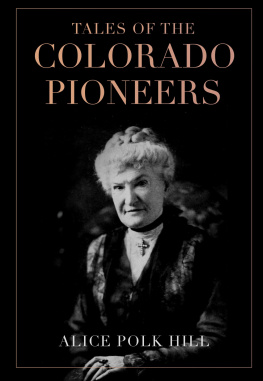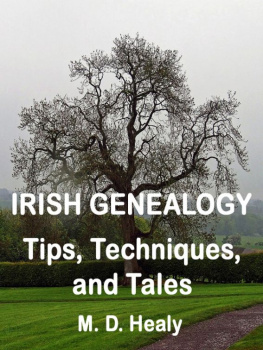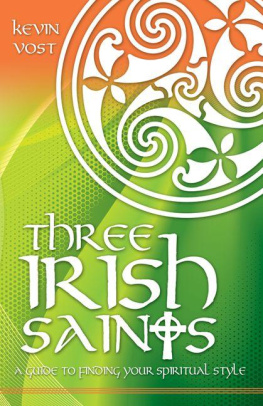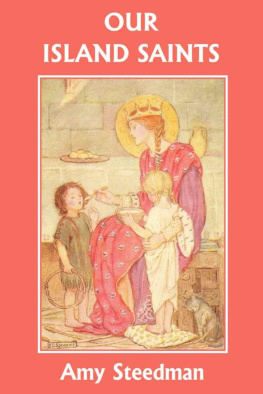Alice Curtayne - Twenty Tales of Irish Saints
Here you can read online Alice Curtayne - Twenty Tales of Irish Saints full text of the book (entire story) in english for free. Download pdf and epub, get meaning, cover and reviews about this ebook. year: 2013, publisher: Sophia Institute Press, genre: Art. Description of the work, (preface) as well as reviews are available. Best literature library LitArk.com created for fans of good reading and offers a wide selection of genres:
Romance novel
Science fiction
Adventure
Detective
Science
History
Home and family
Prose
Art
Politics
Computer
Non-fiction
Religion
Business
Children
Humor
Choose a favorite category and find really read worthwhile books. Enjoy immersion in the world of imagination, feel the emotions of the characters or learn something new for yourself, make an fascinating discovery.
- Book:Twenty Tales of Irish Saints
- Author:
- Publisher:Sophia Institute Press
- Genre:
- Year:2013
- Rating:4 / 5
- Favourites:Add to favourites
- Your mark:
- 80
- 1
- 2
- 3
- 4
- 5
Twenty Tales of Irish Saints: summary, description and annotation
We offer to read an annotation, description, summary or preface (depends on what the author of the book "Twenty Tales of Irish Saints" wrote himself). If you haven't found the necessary information about the book — write in the comments, we will try to find it.
Twenty Tales of Irish Saints — read online for free the complete book (whole text) full work
Below is the text of the book, divided by pages. System saving the place of the last page read, allows you to conveniently read the book "Twenty Tales of Irish Saints" online for free, without having to search again every time where you left off. Put a bookmark, and you can go to the page where you finished reading at any time.
Font size:
Interval:
Bookmark:
Twenty Tales of Irish Saints
Alice Curtayne
SOPHIA INSTITUTE PRESS
Manchester, New Hampshire
Twenty Tales of Irish Saints was originally published by Sheed and Ward (New York: 1955). This 2004 edition by Sophia Institute Press contains new illustrations, additional biographical material, and minor editorial revisions to the original text.
Copyright 2004 Sophia Institute Press
All rights reserved
Jacket design and illustrations
by Theodore Schluenderfritz
Printed in the United States of America
No part of this book may be reproduced, stored in a retrieval system, or transmitted in any form, or by any means, electronic, mechanical, photocopying, or otherwise, without the prior written permission of the publisher, except by a reviewer, who may quote brief passages in a review.
Sophia Institute Press
Box 5284, Manchester, NH 03108
1-800-888-9344
www.SophiaInstitute.com
Nihil obstat:
Rev. Thomas J. McHugh, L.L.D.
Censor Librorum
Imprimatur:
Jerome D. Hannan
Bishop of Scranton
June 16, 1955
Twenty tales of Irish saints / Alice Curtayne.p. cm.
ISBN 1-928832-38-5 (pbk. : alk. paper)1. Christian saintsIrelandBiography.2.LegendsIreland. I. Title.BX4659.I7C8 2004
282.0922415dc22200400062904 05 06 07 08 09 10 9 8 7 6 5 4 3 2 1
Authors note
All the stories in this book are about real people who lived long ago in Ireland. But even though these people really lived, the stories about them are just legends. Whether such things really happened or not, I am sure you will agree with me that the stories in this book are lovely, interesting, and worth knowing.
Patrick
 his is a story about St. Patrick and two little princesses, Ethna and Fedelma. They were the daughters of the king of Connaught, the northwest province of Ireland. They were quite young, indeed little more than children, and full of fun and life. In the summer months, when the weather was hot, they used to begin the day with a bath. The place they bathed in was near the palace, yet it was quite private, and no one ever came near it early in the morning.
his is a story about St. Patrick and two little princesses, Ethna and Fedelma. They were the daughters of the king of Connaught, the northwest province of Ireland. They were quite young, indeed little more than children, and full of fun and life. In the summer months, when the weather was hot, they used to begin the day with a bath. The place they bathed in was near the palace, yet it was quite private, and no one ever came near it early in the morning.
But one day Ethna and Fedelma and their two maids-in-waiting had a great surprise: they found a number of tents set up on the grassy slope near their bathing pool.They stared; then they listened.
There was a droning sound of voices speaking in a strange language. Every now and again a voice broke into song and very sweet it was, mingled with the bird song from the nearby woods and the water sound from the river.
St. Patrick and his companions had come and were saying the Divine Office in Latin. They had arrived during the night and they brought a message for the king of Connaught. Of course they knew nothing of princesses taking daily baths, and the little princesses, because they were pagans, knew nothing at all about Patrick and his companions.
The voices stopped and a man came out into the open. He was small but strongly made. He looked like a man who spent all his days and nights in the open. It was St. Patrick. The girls and the man stared at one another.Then the older princess said, rather severely, Who are you, and where do you come from?
Patrick did not answer for some seconds.Then he said, We have more important things to tell you than just our names and where we come from. We know who the one true God whom you should adore is.
Some might say that the saint did not answer the princesses very politely. He brushed aside their questions and went on to tell them something quite different. But far from being annoyed, the young girls were delighted. In a flash something seemed to light up inside them, to make a blinding white blaze in their hearts and minds.They knew at once that this was real real news that was as true as night and day, as true as being alive. It all happened in seconds.
Then they asked questions a whole torrent of questions.
Who is God?
Where does He live?
Will He live forever?
Will we see Him and be with Him when we die?
Who is His Son?
Is Christ beautiful?
What are we to do?
Quickly and simply, Patrick answered all their questions. He, too, was delighted: the light that blazed up in the girls was in the man, too, and those three lights together made a tremendous glow. The maids and Patricks companions stood around listening to the quick questions and the lovely answers. They knew that they were very lucky to be near the saintly man and the sweet girls and they felt that the Holy Spirit was there, too, in their midst.
Oh, tell us how to find the good God. Teach us more about the kind Christ who died on the cross. Tell us more, more, more, the two princesses urged.
But there was no great need to tell more: they had already received the Spirit of Truth. Patrick led them to the pool where each morning they went to bathe and there he baptized them. For a little while after, Ethna and Fedelma were very still. They asked no more questions; they were praying. Patrick prepared to say Mass. His companions made the altar ready. Then the girls came to him again.
I want to see Jesus Christ now, said Ethna.
And so do I, said Fedelma. I want to be with Him in His home for ever and ever.
Patrick was very moved by this loving longing. Very gently he explained to them that it was impossible, they would not be able to see God until after death. They were still young, he told them, and they had their lives to live. If they lived good Christian lives, they would then be able to go to God for always and always and great joys would take the place of the sorrows of this world. The girls said no more and Patrick began the Mass.
The Mass went on.The water seemed to sing as it flowed by, an odd bird chirruped, a wind rustled the leaves in the trees. Everyone was still. Then the youngest man in the company rang a little bell and all bowed their heads. Jesus Christ was with them in that grassy place beside the water in the king of Connaughts park. Soon the bell rang again: it was the Communion of the Mass. Patrick turned around with the vessel of Sacred Hosts and, beckoning to the kings daughters, he gave them Holy Communion.
For a little while the girls looked so happy and so beautiful that they were like angels. And then (the story tells us) they died. They longed so much to be with Christ that they died of longing.We dont know and we will never know until we die ourselves why God took those young girls, but He must have loved them very much to have done so.We do know, however, how happy St. Patrick was to have met with such quick, wholehearted, whole-souled belief.
When he had to take the road again the hard unkind road that went up and down Ireland his step was light and there was a smile on his lips.
 here were only two being baptized in the Ethna and Fedelma story, but often Patrick baptized hundreds of people on a single day. He would come to a place, a crowd would gather, and when he told them about the true
here were only two being baptized in the Ethna and Fedelma story, but often Patrick baptized hundreds of people on a single day. He would come to a place, a crowd would gather, and when he told them about the true
God, the people would cry out from all sides that they wanted to become Christians. Then all would move off to the nearest river, or well, to be baptized.
It was that way when Aengus was baptized. He was a Prince of Munster and when St. Patrick finished preaching, Aengus was longing with all his heart to become a Christian.The crowd surrounded Patrick as he prepared to baptize this important man. Patrick got out his book and began to look for the place of the baptismal ceremony but he found that his crosier was in his way.
A bishop always carries a crosier about with him. A bishop is a shepherd not of sheep, of course, but of people. A shepherd carries a crook, which is a long stick with a curved top, while a bishop carries a crosier, which is nothing more than a rather ornamental crook.
Next pageFont size:
Interval:
Bookmark:
Similar books «Twenty Tales of Irish Saints»
Look at similar books to Twenty Tales of Irish Saints. We have selected literature similar in name and meaning in the hope of providing readers with more options to find new, interesting, not yet read works.
Discussion, reviews of the book Twenty Tales of Irish Saints and just readers' own opinions. Leave your comments, write what you think about the work, its meaning or the main characters. Specify what exactly you liked and what you didn't like, and why you think so.









